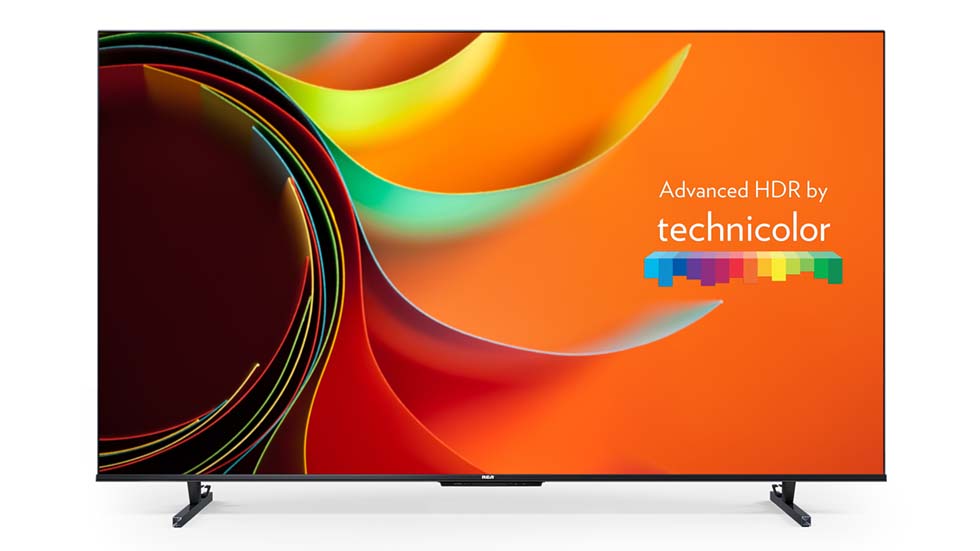CTA Tells FCC: Don't Mandate ATSC 3.0 Tuners
Filing calls NAB’s petition to require 3.0 tuners a ‘heavy-handed and risky government intervention’

WASHINGTON—The Consumer Technology Association has continued its opposition to mandates requiring that NextGen TV/ATSC 3.0 tuners be included in new TV sets, saying in an FCC filing that such rules would raise prices and stifle innovation at a time when only a “small sliver of consumers … still use over-the-air reception.”
“There is no basis whatsoever for heavy-handed and risky government intervention to justify a regulatory mandate when the marketplace is working," the CTA argued in its filing. “Doing so would impose real costs for consumers, stifle innovation and levy unneeded regulations contrary to this Administration’s goals without a guarantee that consumers will tune into more broadcast video.”
In February, CTA CEO and vice chair Gary Shapiro came out against a National Association of Broadcasters petition to the FCC proposing that the agency require 3.0 tuners in new TV sets as part of a larger push to speed the transition to NextGen TV.
“The National Association of Broadcasters is at it again—first pushing to mandate FM chips in phones, then misleading policymakers about AM radio and now forcing NextGen TV onto every consumer and manufacturer,” Shapiro said in late February. “This is a product that costs more and consumers have not embraced. This will impose a large percentage increase in costs at a time when the TV set has proved to be the rare deflationary product.”
In its May 7 filing , the CTA stressed its longstanding support for a voluntary NextGen TV transition, noting that it joined with NAB, America’s Public Television Stations (APTS) and the AWARN Alliance to submit a 2016 petition requesting that the FCC authorize voluntary use of the Next Generation TV transmission standard.
While it continues to support “market-driven innovation and consumer choice,” the CTA said it "opposes government mandates that increase costs and limit competition and choice in technology design.”
The NAB proposal for mandating the inclusion of both ATSC 1.0 and ATSC 3.0 tuners on all new TV broadcast receivers would “remove manufacturer and consumer choice” and “represents NAB’s unilateral reversal from the joint CTA, NAB, APTS, and AWARN Alliance position, which correctly observed that ‘[a]doption of a tuner mandate would be counterproductive and unnecessary.’ ”
The professional video industry's #1 source for news, trends and product and tech information. Sign up below.
A “voluntary transition to ATSC 3.0 for both broadcasters and manufacturers is important because it recognizes the importance of consumer choice and the role of a functioning marketplace," the filing stressed. "Today, consumers are watching video programming from many sources and on many types of devices. The Commission should not mandate tuners, especially when doing so would be principally targeted at the small sliver of consumers that still use over-the-air reception even as the mandate would impose costs more broadly across the entire video programming market. A tuner mandate does not ensure a successful transition to ATSC 3.0; high-value content driving consumer demand and adoption does.”
It also stressed that “it is premature to impose a mandate because manufacturers are meeting marketplace demand for ATSC 3.0 tuners without regulatory intervention."
In terms of the market, the CTA stressed, “Broadcast television is one of many video platforms available to consumers and, increasingly, consumers are choosing to watch video on multiple platforms and devices.“
More specifically, the filing cites CTA’s research showing that nearly all U.S. adults have access to multiple devices in the home that provide them with video content. “These devices include TVs (77%) and smartphones (80%) as well as tablets, laptops, PCs and portable gaming devices … An astonishing 94% of adults indicated that they watched video content on a consumer device in the past three months … Among the devices and services available to consumers are myriad devices with over- the-air broadcast tuners, but over-the-air broadcast television is only a small percentage of consumers’ video programming diet," the filing said.
"According to Horowitz Research, consumers subscribe to MVPDs (44% of homes), SVODs (81% of homes), and vMVPDs (23% of homes) in addition to viewing free streaming services (70% of homes)," the CTA noted. "Further, the latest data, according to Horowitz Research, indicates that homes with TV antennas dropped to 19% in 2025, and CTA found fewer than 10% of Americans rely exclusively on antennas for television viewing.”
It also argued that the marketplace is working in providing ATSC 3.0 to consumers, with more than 14 milliion NextGen TV-capable sets having been purchased, according to CTA.
CTA’s research has also found that, "on a voluntary, market- driven basis, the majority of TVs shipped in the United States in 2028 will be ATSC 3.0 enabled."
Mandating 3.0 tuners will also increase prices. “CTA staff recently conducted a search for 55-inch, 4K resolution, ‘mini-LED QLED’ TVs from one nationwide retailer,” the filing reported. “The search resulted in eight models, five of which had ATSC 1.0 tuners and three with ATSC 1.0 and 3.0 tuners. Among these televisions, the average price of those with only ATSC 1.0 tuners was $676, while the average price of televisions with ATSC 3.0 support was $833.”
Concluded CTA: “The bottom line is that regulatory intervention to mandate broadcast reception capabilities in consumer devices remains unnecessary and counterproductive. Significantly, government mandates for technologies will increase consumer prices by requiring all devices to include tuner technology regardless of consumer need or intended use (and for which only some consumers may be interested). “
The filing also “vigorously opposes any design mandates, especially with respect to a device’s user interface, as NAB suggests. First and foremost, the Commission lacks the statutory authority to exert wide-ranging authority over devices’ interfaces or over how consumers interact with devices to select what content to watch. This would be the kind of anticompetitive regulation the administration is trying to identify and remove from the federal government’s books.”
George Winslow is the senior content producer for TV Tech. He has written about the television, media and technology industries for nearly 30 years for such publications as Broadcasting & Cable, Multichannel News and TV Tech. Over the years, he has edited a number of magazines, including Multichannel News International and World Screen, and moderated panels at such major industry events as NAB and MIP TV. He has published two books and dozens of encyclopedia articles on such subjects as the media, New York City history and economics.

